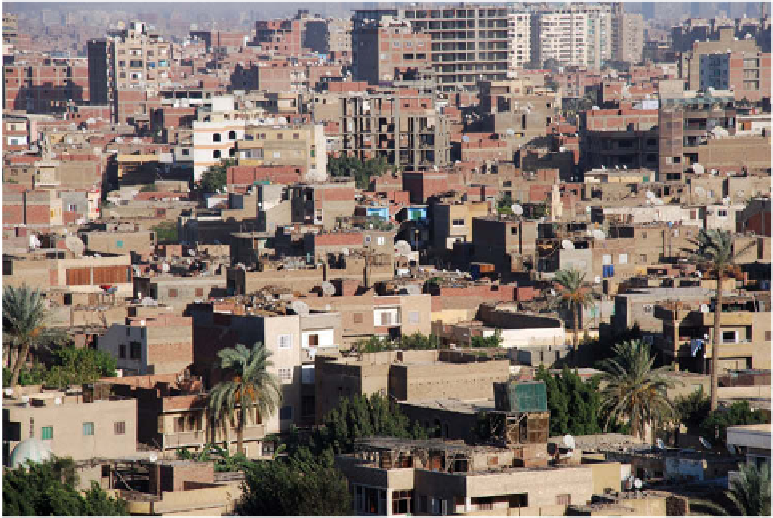Geography Reference
In-Depth Information
Field Note
“Central Cairo is full of the multistory buildings,
transportation arteries, and commercial signs
that characterize most contemporary big cities.
Outside of a number of mosques, few remnants
of the old medieval city remain. The fi rst blow
came in the nineteenth century, when a French-
educated ruler was determined to recast Cairo as
a world-class city. Inspired by the planning ideas
of Paris's Baron von Hausman, he transformed the
urban core into a zone of broad, straight streets.
In more recent years the forces of modern inter-
national capitalism have had the upper hand.
There is little sense of an overall vision for cen-
tral Cairo. Instead, it seems to be a hodge-podge
of buildings and streets devoted to commerce,
administration, and a variety of producer and
consumer services.”
Figure 9.32
Cairo, Egypt.
© Alexander B. Murphy.
city governments are encouraging commercialization of
the central business district and gentrifi cation of neigh-
borhoods in and around the central business district.
The plans that city governments draft to revive cen-
tral cities usually involve cleaning streets, sidewalks, and
buildings; tearing down old, abandoned buildings; and
building up commercial offerings and residences. City
governments have often created programs to encourage
commercialization
of central business districts, which
entails transforming the central business district into an
area attractive to residents and tourists alike. Several cities,
including Miami, New York, and Baltimore, have created
Field Note
“Moving out from central Cairo, evidence of the
city's rapid growth is all around you. These hast-
ily built housing units are part of the (often los-
ing) effort to keep up with the city's exploding
growth. From a city of just one million people
in 1930, Cairo's population expanded to six mil-
lion by 1986. And then high growth rates really
kicked in. Although no one knows the exact size
of the contemporary city, most estimates sug-
gest that Cairo's population has doubled in the
last 20 years. This growth has placed a tremen-
dous strain on city services. Housing has been a
particularly critical problem—leading to a land-
scape outside the urban core dominated by hast-
ily built, minimally functional, and aesthetically
non-descript housing projects.”
Figure 9.33
Cairo, Egypt.
© Alexander B. Murphy.













































